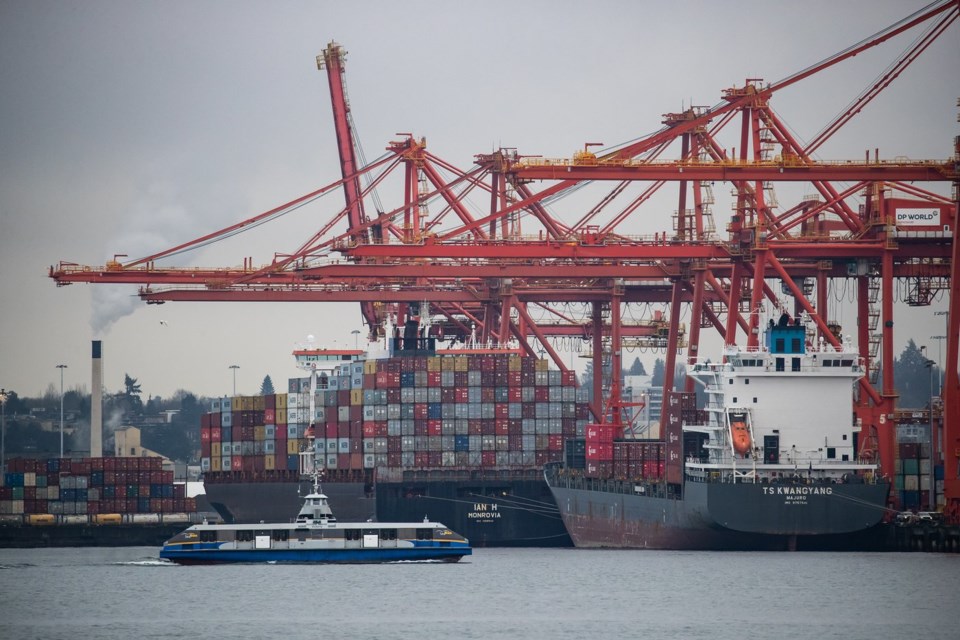OTTAWA — Canada posted its largest merchandise trade deficit on record in April at $7.1 billion as exports fell sharply in the face of U.S. President Donald Trump's tariffs.
Statistics Canada said Thursday the result, which followed a deficit of $2.3 billion in March, came as a plunge in exports to the U.S. more than offset a gain in shipments to other destinations around the world.
Katherine Judge, executive director and senior economist at CIBC Capital Markets, called the numbers "really bad."
"Essentially trade has totally collapsed," Judge said in an interview.
"Obviously the U.S. is our biggest trading partner, so it didn't really matter that trade with some other countries increased. I think this just exemplifies how dependent we are on the U.S. and also how difficult it will be to diversify our trade base away from the U.S."
April was the first full month of tariffs between Canada and the U.S. and saw the implementation of tariffs on the auto sector.
Canada posted a merchandise trade surplus with the U.S. of $3.6 billion in April, the smallest surplus with the country's largest trading partner since December 2020. The result came as exports to the U.S. fell 15.7 per cent and imports from the U.S. dropped 10.8 per cent.
Meanwhile, Canada's trade deficit with countries other than the U.S. was $10.7 billion in April compared with $9 billion in March. Exports to countries other than the U.S. rose 2.9 per cent to $18.3 billion in April, while imports from countries other than the United States gained 8.3 per cent to hit a record $29 billion.
The trade report followed Statistics Canada's report last week that real gross domestic product grew at an annualized rate of 2.2 per cent in the first quarter of the year.
Judge said the first quarter was boosted by U.S. businesses buying Canadian goods ahead of tariffs that they thought would be implemented, but that's now in the rear view mirror.
"When you consider not just the trade numbers, but measures of business and consumer confidence, the increase in the unemployment rate, this is all consistent with an economy that's operating very much below potential and the Bank of Canada should very much be cutting interest rates," she said.
Shelly Kaushik, senior economist at BMO Capital Markets, said there were significant double-digit drops in auto imports and exports, but the drop in trade was pretty broad-based.
"I think almost every category of Canadian exports were down in April. So it's certainly not just an auto story, although of course that is the major thing that changed certainly in the tariff world in April," she said.
Overall exports fell 10.8 per cent in April to $60.4 billion, their lowest level since June 2023, as exports of motor vehicles and parts dropped 17.4 per cent. Exports of consumer goods also fell 15.4 per cent, while exports of energy products dropped 7.9 per cent.
Meanwhile, total imports fell 3.5 per cent in April to $67.6 billion as imports of motor vehicles and parts lost 17.7 per cent and industrial machinery, equipment and parts dropped 9.5 per cent.
In real or volume terms, total exports fell 9.1 per cent in April, while imports fell 2.9 per cent in April.
In a separate report, Statistics Canada said monthly service exports in April fell 0.5 per cent to $17.9 billion, while imports of services dropped 1.1 per cent to $18.3 billion.
When international trade in goods and services are combined, the agency said Canada's total trade deficit with the world was $7.5 billion in April compared with $2.7 billion in March.
This report by The Canadian Press was first published June 5, 2025.
Craig Wong, The Canadian Press



